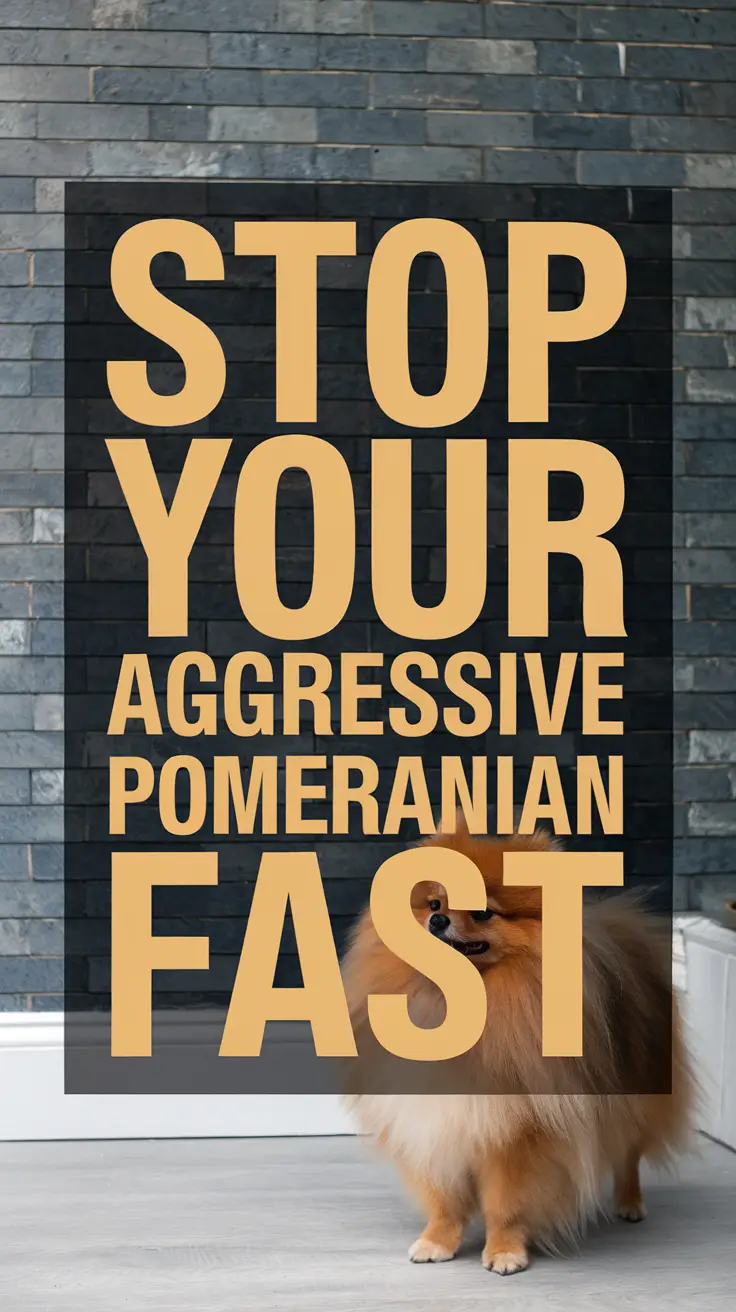That piercing yip at 6 AM followed by the neighbor’s not-so-subtle throat clearing tells you everything you need to know – your adorable fluffball has officially become the neighborhood alarm clock nobody asked for. Trust me, I’ve been exactly where you are right now, clutching my coffee mug while Sash announced every squirrel, delivery truck, and suspicious blade of grass to our entire street.
Quick Summary:
- Identify the root cause of excessive barking (boredom, anxiety, or alerting behavior)
- Use positive reinforcement training techniques consistently
- Create a structured environment with mental stimulation and proper exercise
Why Pomeranians Turn Into Tiny Town Criers
Pomeranians weren’t bred to be silent ornaments on your couch – they’re descendants of Arctic spitz dogs who had actual jobs to do. The American Kennel Club describes them as “alert” and “curious,” which is a polite way of saying they have opinions about everything and aren’t shy about sharing them.
When Sash first came home, I thought her barking was cute. “Look how she’s protecting us!” I’d coo as she terrorized the mailman. Three noise complaints later, the cuteness had definitely worn off.
Common Barking Triggers
| Trigger | What It Looks Like | Why It Happens |
|---|---|---|
| Alert Barking | Sharp, repetitive barks at sounds or movement | Natural guarding instinct |
| Attention Seeking | Persistent barking directed at you | Learned behavior that gets results |
| Boredom/Anxiety | Continuous barking when alone | Excess energy or separation stress |
| Excitement | High-pitched barking during play or greetings | Overstimulation |
The “Quiet” Command Game-Changer
Here’s what actually worked for Sash, after I stopped yelling “QUIET!” like some sort of deranged opera singer. Dr. Patricia McConnell, a renowned animal behaviorist, emphasizes that dogs learn faster through positive reinforcement than punishment – and boy, was she right.
Step-by-Step Training Process
- Wait for natural quiet moments: Don’t try to teach during a barking frenzy
- Say “quiet” in a calm, normal voice (not a desperate whisper)
- The moment they stop barking, mark it with “good quiet” and give a high-value treat
- Gradually increase the quiet duration before rewarding
- Practice during low-trigger times first before tackling the mailman situation
The key insight that changed everything for me: I was accidentally rewarding Sash’s barking by giving her attention, even negative attention. Every time I said “no” or “stop,” she heard “keep going, you’re getting a reaction!”
Environmental Management Strategies
Sometimes the smartest approach is changing the environment rather than fighting your Pom’s natural instincts. I learned this the hard way after weeks of failed training sessions that left us both frustrated.
Visual Barriers
Sash’s barking dropped by 70% once I installed frosted window film on the lower half of our front windows. She couldn’t see every pedestrian, but still had enough visual access to feel secure. It’s like giving your dog sunglasses – they can see what matters without getting overwhelmed by every detail.
Mental Stimulation Solutions
- Puzzle feeders: Turn meal time into brain time
- Rotating toy system: Keep 3-4 toys available, rotate weekly
- Training sessions: 5-10 minutes of tricks or commands daily
- Sniff walks: Let them explore smells at their own pace
When Professional Help Makes Sense
After three months of consistent training, most Pomeranians show significant improvement. If you’re still dealing with excessive barking, it might be time to call in reinforcements. Certified dog trainer Mark Johnson notes that some barking issues stem from underlying anxiety or medical conditions that require professional assessment.
Red Flags for Professional Intervention
- Barking continues for hours when left alone
- Aggressive posturing accompanies the barking
- No improvement after 8-12 weeks of consistent training
- Sudden changes in barking patterns (could indicate medical issues)
Tools That Actually Help (And Ones to Avoid)
I’ll be honest about what worked and what was a waste of money. Full disclosure: I’m not affiliated with any of these products – just sharing what survived the Sash test.
Effective Tools
| Tool | Pros | Cons | Best For |
|---|---|---|---|
| White Noise Machine | Masks trigger sounds, calming | Doesn’t address root cause | Apartment living |
| Treat-Dispensing Toys | Mental stimulation, positive association | Can lose novelty quickly | Boredom barking |
| Training Clicker | Precise timing, clear communication | Requires consistency | Teaching “quiet” command |
Skip These “Solutions”
Ultrasonic devices, citronella collars, and shock collars might seem like quick fixes, but they often increase anxiety and can make barking worse long-term. The American Veterinary Society of Animal Behavior specifically recommends against punishment-based training methods for behavioral issues.
The Reality Check
Here’s something most training articles won’t tell you: your Pomeranian will probably never be completely silent. Sash still alerts me to important developments like the pizza delivery guy or suspicious raccoons. The difference is that now she stops when I ask her to, and she’s not narrating every moment of our daily life.
Some days will be better than others. Last week, Sash had a complete meltdown over a new garden gnome the neighbors installed. But instead of a 20-minute barking marathon, it was a brief protest followed by a successful “quiet” command. Progress, not perfection, is the goal.
The journey to a quieter home isn’t just about training your dog – it’s about understanding that your Pomeranian’s voice is part of their personality. The goal isn’t to silence them completely, but to help them learn when their input is needed and when it’s time to let the humans handle things. Trust the process, celebrate small victories, and remember that behind all that barking is a dog who just wants to keep you safe and be part of the conversation.




